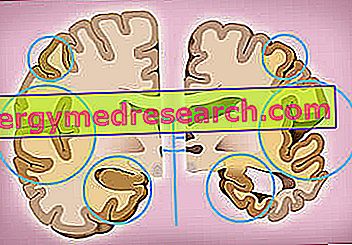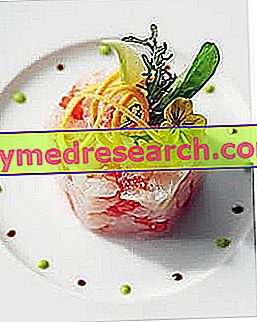Conjunctivitis is the most widespread ocular inflammatory disease.
It is an inflammatory process that involves the conjunctiva (hence the name), that is the thin translucent mucous layer that covers the eye and the inside of the eyelids anteriorly.

The causes are:
- Infectious.
- Irritative.
- Allergic.
Although quite tedious, mild conjunctivitis is not considered a serious disease. On the other hand it requires specific, calibrated and possibly early care. This is necessary to avoid deterioration, complications and recurrences.
What to do
- Ensuring effective prevention: it is fundamentally hygienic and behavioral.
- At the onset of the first symptoms it is necessary to immediately contact the general practitioner or the emergency room.
- At the same time, especially when a "suspicious" secretion appears among the symptoms, it is necessary to avoid contact with other people. This is essential for the prevention of infection.
- It is important to know how to recognize (at least in part) the symptoms of conjunctivitis, which are:
- Eye redness.
- Photophobia: hypersensitivity to light.
- Tearing.
- Pain, burning or itching of the eye.
- Inappropriate color, texture and odor secretions.
- Difficulty keeping the eye open.
- Impairment of sight.
- Enlarged lymph nodes around the eye.
NB : The symptoms may be different depending on the etiology of conjunctivitis.
- If it is serious, the person will be referred to the ophthalmologist, who will analyze the aetiology of the disorder by analyzing the eye:
- Bacterial conjunctivitis: caused by bacteria such as staffilococci, streptococci, Pseudomonas aeruginosa (especially in newborns), Clamydia trachomatis etc.
- Viral conjunctivitis: caused by viruses such as Herpes simplex, Herpes zoster and molluscum contagiosum.
- Irritative conjunctivitis: caused by direct contact with irritating substances, for example: boiling water vapor, prolonged sun exposure, vapors of chemical solvents, substances produced by plants or animals, etc.
- Allergic conjunctivitis: caused by exposure to allergenic molecules such as: pollens, grasses, dust mites, animal hair, cosmetics, etc.
- If necessary (for example in case of resistance to drugs) the ophthalmologist will prescribe further diagnostic investigations such as:
- Cultural tests.
- Cell smears.
- Bacterial colors.
- Immuno-diagnostic tests.
- Bulbar conjunctiva biopsy (in the case of a suspected sebaceous carcinoma).
NB : The differential diagnosis of the specialist is necessary to exclude other diseases such as: uveitis, glaucoma, keratitis, trauma and scleritis.
- Specific care will include:
- For bacterial conjunctivitis, antibiotic and anti-inflammatory drug therapy. Generally it is sufficient to use a topical product for a total resolution.
- For viral conjunctivitis, antiviral and anti-inflammatory drug therapy. On the other hand, these are mainly chronic infections that will tend to recur over a lifetime.
- For irritative conjunctivitis, anti-inflammatory, analgesic and emollient drug therapy.
- For allergic conjunctivitis, antihistamine drug therapy.
- If the conjunctivitis is recurrent or the subject is aware of a previous clinical history, he can intervene autonomously with the administration of local drugs (previously administered by the doctor).
- On the other hand it is very important to avoid worsening the clinical picture. This can trigger serious complications:
- Keratitis.
- Dermatitis.
- Corneal ulcer.
- Systemic symptoms: fever, malaise, etc.
What NOT to do
- Ignore the ocular symptoms or treat yourself independently: remember that although the subject may be conscious of the disease (experience on his own clinical history), it cannot be excluded that he may contract a different form of conjunctivitis. This implies a different level of severity and probably the ineffectiveness of customary therapy.
- Furthermore, the use of inappropriate drugs can also worsen the existing condition.
- Rub your eyes with dirty hands and perform cleaning maneuvers during infection.
- Avoid contacting the specialist if, after a few days after starting therapy, the symptoms do not diminish or tend to worsen.
- Do not duly follow the drug therapy prescribed by the specialist.
- Touch the infected eye with the medication applicator.
- Use drugs that have expired or been open for over a week.
- Apply makeup and use contact lenses during infection.
What to eat
There is no diet that prevents or promotes the healing of conjunctivitis; however some nutritional measures are considered positive. It is advisable to increase the consumption of foods rich in:
- Vitamin C or ascorbic acid: antioxidant and involved in supporting the immune system. It is mainly found in vegetables and fresh fruits, better if acidulous: peppers, citrus fruits, tomatoes, radicchio, parsley, kiwi, lettuce, apple, chicory, cherries, strawberries, pineapple, broccoli, cabbage etc.
NB . It is a thermolabile molecule, which is why it is advisable to take most of the foods mentioned in raw form.
- Vitamin D or calciferol: involved in supporting the immune system. It is mainly found in fish, fish oil and egg yolk.
- Zinc: antioxidant. It is mainly found in the liver, meat, milk and derivatives and in some bivalve molluscs (especially oysters).
- Selenium: antioxidant. It is mainly found in meat, in fishery products, in egg yolk, in milk and derivatives and in enriched foods (potatoes, etc.).
- Magnesium: involved in supporting the immune system. It is mainly found in oil seeds, cocoa, bran, vegetables and fruits.
- Iron: involved in supporting the immune system. It is mainly found in meat, in fishery products and in egg yolk.
- Polyphenolic antioxidants: they also have an anti-inflammatory effect. They are contained above all in fresh fruit and vegetables, but also in red wine, in seeds, in aromatic herbs, in tea and in herbal teas, in roots, in medicinal herbs, etc.
- Amino acid lysine: involved in supporting the immune system. It is mainly found in meat, cheese, some fishery products and legumes (especially soya).
- Probiotics: symbiotic bacteria that colonize the intestine; they are involved in supporting the immune system. They are found mainly in fermented foods such as yogurt, tofu, tempeh, buttermilk etc.
- Omega 3: involved in supporting the immune system and powerful anti-inflammatories. They are contained above all in the blue fish, in some oil seeds and in the relative oils, in the algae.
What NOT to Eat
- There are no less recommended products than others. However, it is recommended to avoid:
- Monothematic diets.
- Vegan diet.
- Diet free of vegetables and vegetables.
- Diets based solely on:
- Cooked foods.
- Preserved foods.
Natural Cures and Remedies
- Herbal medicine:
- Delicate chamomile packs on disposable cotton wool: they provide immediate relief from symptoms, but do not participate in effectively fighting the triggering causes.
Pharmacological care
- Drugs for local use such as eye drops or ophthalmic ointment:
- Antibiotic eye drops: for bacterial conjunctivitis:
- Chloramphenicol: for example Vitamfenicolo, Mycetin and Chemicetina.
- Ciprofloxacin: eg Ciprofloxac, Samper, Ciproxin and Kinox.
- Levofloxacin: eg Levofloxacin, Levixiran and Aranda.
- Gentamicin: for example Gentamicin, Ciclozinil, Genbrix and Gentalyn.
- Fusidic acid: for example Fucidin.
- Anti-inflammatory eye drops based on cortisone: for bacterial conjunctivitis.
- Analgesic eye drops based on NSAIDs (non-steroidal anti-inflammatory drugs): for the symptoms of viral conjunctivitis:
- Diclofenac: for example Dropflam and Voltaren Ofta.
- Ketorolac: for example Ketorolac.
- Dexamethasone: with Decadron, Soldesam, Luxazone, Visumetazone and Luxazone.
- Rarely, antiviral ointments: they are not always necessary because the herpes acutias regress spontaneously within 3-7 days. To avoid cortisone drops.
- Eye drops and antihistamine tablets: to eliminate itching, redness and eye irritation:
- Olopatadine: eg Opatanol.
- Emedastine: for example Emadine.
- Azelastine: for example Lasticom.
- Ketotifene: for example Zaditen.
- Antazoline: for example Antistin Privina and Antaz.
- Chromoglycate sodium: for example Lomudal Collirio and Cromabak.
- Nedocromil sodium: for example Tilade.
- Lodoxamide: for example Alomide and Alomide.
- In association, decongestant and vasoconstrictor drugs are sometimes used: they reduce conjunctival blood circulation.
Prevention
- Avoid touching your eyes with dirty hands.
- After infection, avoid touching yourself (you could transfer the infection from one eye to the other).
- Do not expose your eyes to strongly irritating environments / atmospheres.
- If necessary, use protective masks.
- Use sunglasses with certified lenses and filters for UV rays.
- Do not expose your eyes to allergens.
- If necessary, perform preventive antihistamine drug therapy.
- Avoid the exchange of towels, wipes, make-up items, etc.
Medical Treatments
There are no specific medical treatments to reduce the risk of conjunctivitis.
- Surgery: it can be used when conjunctivitis is secondary to a primary ocular problem, for example carcinoma.
NB : the conjunctiva and the cornea can be transplanted; however it is a medical intervention that concerns degenerative diseases and not the trivial conjunctivitis.



